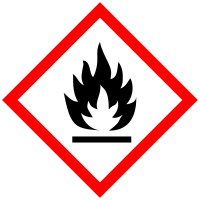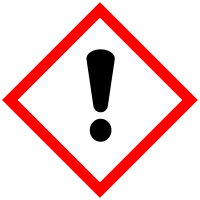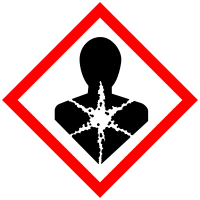
Improving Member States preparedness to face an HNS pollution of the Marine System (HNS-MS)
Vinyl Acetate
Description Top
| CAS number | 108-05-4 |
| UN number | 1301 |
| Chemical formula | C4H6O2 |
| Accident occurred | Yes |
| Standard European Behaviour Classification (SEBC) | Evaporator that dissolves (ED) |
GESAMP Hazard profile
| A1 | A2 | B1 | B2 | C1 | C2 | C3 | D1 | D2 | D3 | E1 | E2 | E3 |
| 0 | R | 2 | NI | 1 | 0 | 2 | 1 | 1 | C | NI | ED | 3 |
Marine pollution Classification (MARPOL Annex II)
| Category | Description |
| Y | Noxious Liquid Substances which, if discharged into the sea from tank cleaning or deballasting operations, are deemed to present a hazard to either marine resources or human health or cause harm to amenities or other legitimate uses of the sea and therefore justify a limitation on the quality and quantity of the discharge into the marine environment. |
Alternate names for this chemical
Acetic Acid, Ethenyl Ester
Acetic Acid, Ethylene Ester
Acetic Acid, Vinyl Ester
1-Acetoxyethylene
Ethenyl Acetate
Ethenyl Ethanoate
Vinyl A Monomer
Vinyl Acetate Monomer
Vinyl Ethanoate
Acetate De Vinyle
Vinyl Acetate
Acetic Acid, Ethylene Ester
Acetic Acid, Vinyl Ester
1-Acetoxyethylene
Ethenyl Acetate
Ethenyl Ethanoate
Vinyl A Monomer
Vinyl Acetate Monomer
Vinyl Ethanoate
Acetate De Vinyle
Vinyl Acetate
Physico-chemical properties Top
| Chemical formula | C4H6O2 | ||
| Molar mass | 86.09 [g/mol] | ||
| State | Liquid at 25°C and 1 atm | ||
| Fusion temperature | -93.2 [°C] | ||
| Boiling temperature | 72.7 [°C] | ||
| Density |
|
||
| Surface tension |
|
||
| Interfacial tension |
|
||
| Kinematic viscosity |
|
||
| Hydrosolubility |
|
||
| Vapour pressure |
|
||
| Vapour density | 3.1 | ||
| Flash point (Pensky-Martens closed cup) | -8 [°C] | ||
| Flash point (Cleveland open cup) | -5 [°C] | ||
| Lower explosivity limit (LEL) | 2.6 [%] | ||
| Upper explosivity limit (UEL) | 13.4 [%] | ||
| Vaporization enthalpy |
|
||
| Combustion enthalpy | 22700000 [J/Kg] | ||
| Specific heat capacity | 1969 [J/(Kg·K)] | ||
| Combustion efficiency | 98 [%] | ||
| Mass flow rate of the combustion surface | 0.14 [Kg/(m²·s)] | ||
| Radiative fraction | 23 [%] | ||
| Henry's constant | 51.6 [mol/(m³·Pa)] |
Behaviour Top
| Log Kow | 0.7 |
| Log Koc | 1.4 |
| Hydrolysis (Half-life) | Not hydrolysable |
| Aqueous photolysis (Half-life) | Not photolysable |
| Biodegradation in estuary environment (Half-life) | 15 days |
| Biodegradation in marine environment (Half-life) | 50 days |
| Standard European Behaviour Classification (SEBC) | Evaporator that dissolves (ED) |
| Bioconcentration factor (BCF) | 0.16 |
Ecotoxicity Top
| Lowest median lethal concentration (LC50) on algae | 12.7 [mg/l] | ||
| Lowest median lethal concentration (LC50) on crustacean | 12.6 [mg/l] | ||
| Lowest median lethal concentration (LC50) on fishes | 14 [mg/l] | ||
| Highest no observed effect concentration (NOEC) on algae | 6 [mg/l] | ||
| Highest no observed effect concentration (NOEC) on crustacean | 45 [mg/l] | ||
| Highest no observed effect concentration (NOEC) on fishes | 0.6 [mg/l] | ||
| Assessment factor (AF) |
|
||
| Predicted No Effect Concentration (PNEC) |
|
Hazards Top



Danger
Hazards statements
Physical
H225
Highly flammable liquid and vapour.
Health
H332
Harmful if inhaled.
H335
May cause respiratory irritation.
H351
Suspected of causing cancer.
Environmental
H412
Harmful to aquatic life with long lasting effects.
Precautionary statements
Prevention
P201
Obtain special instructions before use.
P202
Do not handle until all safety precautions have been read and understood.
P233
Keep container tightly closed.
P240
Ground/bond container and receiving equipment.
P241
Use explosion-proof electrical/ventilating/lighting/.../equipment.
P242
Use only non-sparking tools.
P243
Take precautionary measures against static discharge.
P261
Avoid breathing dust/fume/gas/mist/vapours/spray.
P271
Use only outdoors or in a well-ventilated area.
P273
Avoid release to the environment.
P280
Wear protective gloves/protective clothing/eye protection/face protection.
P281
Use personal protective equipment as required.
Response
P312
Call a POISON CENTER or doctor/physician if you feel unwell.
P303 + P361 + P353
IF ON SKIN (or hair): Remove/Take off immediately all contaminated clothing. Rinse skin with water/shower.
P304 + P340
IF INHALED: Remove victim to fresh air and keep at rest in a position comfortable for breathing.
P308 + P313
IF exposed or concerned: Get medical advice/attention.
P370 + P378
In case of fire: Use ... for extinction.
Storage
P405
Store locked up.
P403 + P233
Store in a well-ventilated place. Keep container tightly closed.
P403 + P235
Store in a well-ventilated place. Keep cool.
Disposal
P501
Dispose of contents/container to ...
GESAMP Top
GESAMP Hazard profile
| A1 | A2 | B1 | B2 | C1 | C2 | C3 | D1 | D2 | D3 | E1 | E2 | E3 |
| 0 | R | 2 | NI | 1 | 0 | 2 | 1 | 1 | C | NI | ED | 3 |
A1: Bioaccumulation
| Rating | Description |
| 0 | No potential to bioaccumulate |
A1a:
| Rating | Description | Criteria [mg/l] |
| 0 | No potential to bioaccumulate | Log Kow < 1 |
A1b:
| Rating | Description |
| NI | No Information |
A2: Biodegradation
| Rating | Description |
| R | Readily biodegradable |
B1: Acute aquatic toxicity
| Rating | Description | Criteria [mg/l] |
| 2 | Slightly toxic | 10 < LC/EC/IC50 ≤ 100 |
B2: Chronic aquatic toxicity
| Rating | Description |
| NI | No Information |
C1: Acute oral toxicity
| Rating | Description | Criteria [mg/Kg] |
| 1 | Slight | 300 < AOTE ≤ 2000 |
C2: Acute dermal toxicity (skin contact)
| Rating | Description | Criteria [mg/Kg] |
| 0 | Negligible | ADTE > 2000 |
C3: Acute inhalation toxicity
| Rating | Description | Criteria [mg/l] (4 hours exposure) |
| 2 | Moderate | 2 < AITE ≤ 10 |
D1: Skin irritation or corrosion
| Rating | Description | Sign | GHS category |
| 1 | Mildly irritating | Mild erythema with or | Mild Irritant Category 3 |
D2: Eye irritation
| Rating | Description | Sign | GHS category |
| 1 | Mildly irritating | Mild conjunctival hype | Irritant Category 2B |
D3: Long-term health effects
| Notation | Hazard endpoint | Description | GHS category |
| C | Carcinogenicity | Chemicals which have been shown to induce or increase the incidence of cancer | Category 1 for Carcinogens |
E1: Tainting of seafood
| Rating | Description |
| NI | No Information |
E2: Behaviour of chemicals in the marine environment
| Rating | Description |
| ED | Evaporator that dissolves |
E3: Interference with the use of coastal amenities
| Rating | Interference | Description | Interpretation | Warning |
| 3 | Highly objectionable | 1 is highly acutely toxic; and/or 2 is severely irritant or corrosive to skin or eyes; and/or 3 is carcinogenic, mutagenic or reprotoxic; and/or 4 is a floater or persistent floater with associated health effects | 1 C1 and/or C2 and/or C3 = 4; and/or 2 D1 or D2 = 3, 3A, 3B, or 3C; and/or 3 D3 contains C, M or R; and/or 4 E2 = F or Fp and D3 contains Ss, Sr, T, A, N, or I | Warning issued leading to the closure of amenities |
GHS Security Information



Danger
About the project
HNS-MS is a decision-support tool that Belgian and French maritime authorities as well as coastguard stations can activate in order to forecast the drift, fate and behavior of acute marine pollution by Harmful Noxious Substances (HNS) accidentally released in the marine system.
Contact us
Copyright © 2015–2026 HNS-MS Consortium
 HNS-MS has been funded by DG-ECHO under agreement ECHO/SUB/2014/693705 and runs from 1 January 2015 to 31 March 2017.
HNS-MS has been funded by DG-ECHO under agreement ECHO/SUB/2014/693705 and runs from 1 January 2015 to 31 March 2017.